Battenkill Fly Fishing Festival
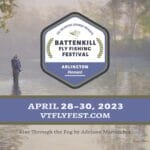
The Battenkill Fly Fishing Festival is making its return after a successful debut last spring.

The Battenkill Fly Fishing Festival is making its return after a successful debut last spring.
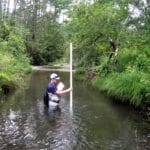
By Jacob A. Fetterman When I decided to change my major toward the end of my freshman year at Lock Haven University, I had no idea about the journey to follow. I was looking for a career that would allow me to positively impact the natural world I grew up admiring. Five-and-a-half years later, it is safe to say that I am well…
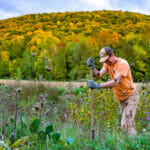
From rookie to pro, Jacob Fetterman works diligently to improve habitat conditions for Battenkill watershed trout
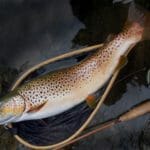
By Jacob Fetterman Stretching from Manchester, Vt., to the Hudson River in New York state, the Battenkill River holds a firm place in fly fishing history. Beyond the river’s fame and beauty, it has become evident that, without proper stewardship, the wild trout fishery supported by the Battenkill could slip away due to the degradation of quality habitat through factors such as deforestation, sedimentation, channel modification,…

Flowing from Manchester, Vt., to the Hudson River near Schuylerville, N.Y., the Battenkill is a historic river. It is a significant contributor to the surrounding economy – drawing fly-fishers, paddlers, and outdoor explorers from near and far. Additionally, several successful agricultural operations that enjoy the fruits of a highly productive and functioning watershed. To ensure the long-term stability of this amazing resource and economic driver,…
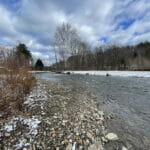
Momentum is building for TU’s restoration team in New York
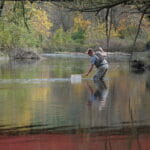
Trout Unlimited launched the Battenkill Home Rivers Initiative in 2020. Orvis has chosen the program as the beneficiary of its Giving Tuesday efforts on Nov. 30, 2021, pledging 10 percent of profits to the program.
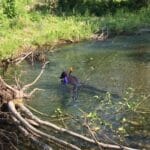
Snorkeling is a relatively easy and cost-effective way to survey streams for trout populations estimates. This summer, TU’s Jacob Fetterman conducted his first surveys on a stretch of Camden Creek, a tributary to the Battenkill River, prior to a habitat restoration project. He will survey the same stretch next to estimate the impacts of the project.
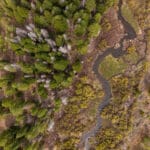
Nation’s largest coldwater conservation nonprofit identifies 200+ “Priority Waters” where work is needed to reverse declines of wild and native fish Contacts: ARLINGTON, Va.—Wild and native trout and salmon, as coldwater fish in a warming world, are facing enormous threats. More than 1.5 million miles of America’s trout and salmon waters are degraded, and populations…
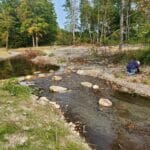
By Jacob Fetterman In the first official year of Trout Unlimited’s Battenkill Home Rivers Initiative, we are thrilled to have completed two restoration projects and one reconnection project within the watershed. The projects to enhance cold-water and spawning habitat took place on three tributaries — Camden Creek, Juniper Swamp Brook, and Coulter Brook — all supporting native brook trout. …
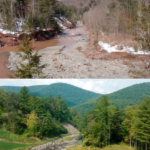
Stony Clove Creek in New York, before restoration (top), and after. Photos courtesy of Hudson Valley One. In 2011, when Hurricane Irene nailed the Atlantic coast, Stony Clove Creek near Chichester, N.Y., carried almost 16,000 cubic feet per second of water down its course, flooding the community and generally making a mess of things. Years…
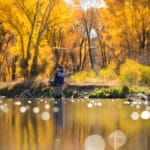
Autumn leaves… blown off the trees… covering the river surface… kind of a bummer if you want to go dry-fly fishing, right?
11/30/1999 Trout Unlimited’s Guide to America’s 100 Best Trout Streams Receives Prestigious National Outdoor Award Trout Unlimited’s Guide to America’s 100 Best Trout Streams Receives Prestigious National Outdoor Award Book Highlights the ‘Who’s Who’ of American Trout Streams Contact: 11/30/1999 — — Trout Unlimited’s ‘Guide to America’s 100 Best Trout Streams’ by John Ross, recently…
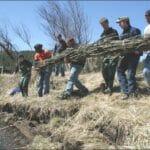
I recently read an essay where a priest on a mission to Guatemala discovered that artists from the village painted museum-quality artwork on the inside walls of a bell-tower—a place where only pigeons would see them. The story reminded me of Trout Unlimited’s work—behind the scenes, often unnoticed, complicated, hard, and, ultimately, beautiful. What a year. We reckoned with racial injustice as a nation, and looked inward to the fact that we need to become…

As a Trout Unlimited Business member from its first day, Black Dog Outdoor Sports used the opportunity of its Grand Opening to support a priority effort toward which many local TU chapters have committed countless hours and substantial funds – namely the Battenkill Home Rivers Initiative (HRI). The Battenkill HRI formally began in January 2020 and represents for Trout Unlimited a full commitment to restoring and sustaining the Battenkill watershed for current and future generations. Led by TU staffer Jacob Fetterman and supported by donations and volunteers from the New York Council and Clearwater, Adirondack, Home-Waters and Southwestern Vermont chapters, the Battenkill HRI employs an ecosystem-based approach to prioritize reconnection, restoration and protection throughout the watershed.
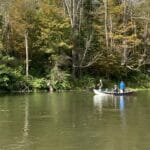
Hello 2022! Trout Unlimited’ s conservation work has continued around the state despite the delays and challenges brought about by the COVID pandemic. We have many highlights from a productive 2021, and some exciting things on the horizon for the coming year. Click below to download the full newsletter. Tracy Brown, the restoration manager for…
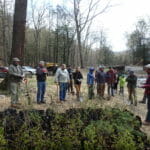
Trout Unlimited had a productive year in New York in 2019. Some of the major accomplishments in the state, by both TU staff and a large group of dedicated TU members/volunteers, are highlighted in a new newsletter. A PDF can be downloaded HERE or a Word document (with live links) can be downloaded HERE. The…
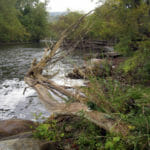
Adding large wood to streams can help narrow over-widened channels and also provide a place for trout to hide from predators such as mergansers, which have been found to be decimating trout of certain sizes in the Battenkill. By John Braico The storied Battenkill, long recognized as a challenging river among anglers, faced a steep…

From big rod makers to small tackle shops, the fly industry makes caring for our waters part of the mission.
Anne Hamilton Anne Hamilton is a graduate of Boston University. She serves on the Philadelphia Museum of Art, Academy of Music, and the International Tennis Hall of Fame boards. Anne is very active in the communities of Newport and Philadelphia and started the Newport Antiques Show in 2006. Her hobbies include fishing, tennis riding, traveling and helping dogs.…